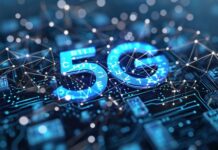The introduction of 5G technology marks a significant milestone in the evolution of telecommunications. As we transition into an era marked by rapid technological advancements, 5G is set to revolutionize not only how we connect but also the very fabric of industries and societies. 5G technology is the newest advancement in wireless communication, offering faster speeds, and improved reliability compared to earlier generations.
Understanding 5G Technology
Before delving into its impact, it’s essential to understand what 5G technology is. 5G, or fifth-generation wireless technology, is designed to deliver faster speeds, lower latency, and greater capacity than its predecessors (4G, 3G, etc.). The key features of 5G include:
- Increased Speed: 5G networks can achieve speeds exceeding 10 Gbps, enabling users to download high-definition movies in seconds.
- Lower Latency: Latency refers to the delay before data begins to transfer. 5G can reduce latency to as low as 1 millisecond, which is crucial for applications requiring real-time responses.
- Greater Capacity: 5G can support a higher number of devices in a given area, making it ideal for densely populated environments.
- Enhanced Connectivity: It will support a wide array of devices, from smartphones to IoT devices, facilitating seamless connectivity.
Benefits of the Advanced Technology:
The 5G standard for cellular networks has advanced the experience of communication not only due to reduced latency, better coverage, and energy savings but also by transforming various sectors and revolutionizing the functionalities of emerging technologies such as AI, AR/VR, edge computing, and the internet of things (IoT).
One of the most immediate impacts of 5G technology is on mobile communication. Users can expect a significantly improved experience with faster downloads, smoother streaming, and better video conferencing capabilities. This enhanced mobile experience not only benefits consumers but also empowers businesses to utilize mobile technologies more effectively. With 5G’s ability to handle a massive number of simultaneous connections, we can expect the proliferation of the technology across sectors. From self-driving vehicles to remote surgery, machine-to-machine communications, and smart cities, 5G will enable various new use cases in consumer and enterprise.
It is important to note that telecom companies are likely to face increased competition as new players enter the market. Companies specializing in IoT, cloud computing, and other emerging technologies may partner with telecom providers to create innovative solutions. This integration will create new business models and opportunities for innovation. Further, this competition could lead to better services and lower prices for consumers.
The technology also has a high potential to bridge the digital divide, especially in developing regions. By providing high-speed internet access, 5G can facilitate education, healthcare, and economic opportunities, contributing to global development.
Catering to the Challenges
Despite the promising potential of 5G, several challenges need to be addressed for its widespread adoption. For example, the rollout of 5G requires significant investment in infrastructure. Telecom companies need to install more cell towers and small cells to support the higher frequency bands that the technology operates on. This can be costly and time-consuming, especially in rural areas where connectivity is already limited.
The increased number of connected devices also expands the potential attack surface for cybercriminals. Ensuring robust security measures is essential to protect sensitive data and maintain user trust. Furthermore, Governments and regulatory bodies must establish policies that facilitate investment and innovation while addressing concerns such as spectrum allocation and public health.
To sum it up, 5G technology is not merely an upgrade in telecommunications; it is a catalyst for change across multiple sectors. As we embrace this new era, the potential applications of 5G are boundless, from transforming everyday communication to revolutionizing entire industries. However, realizing this potential requires addressing the challenges ahead, and ensuring that the benefits of 5G are accessible to all.


















